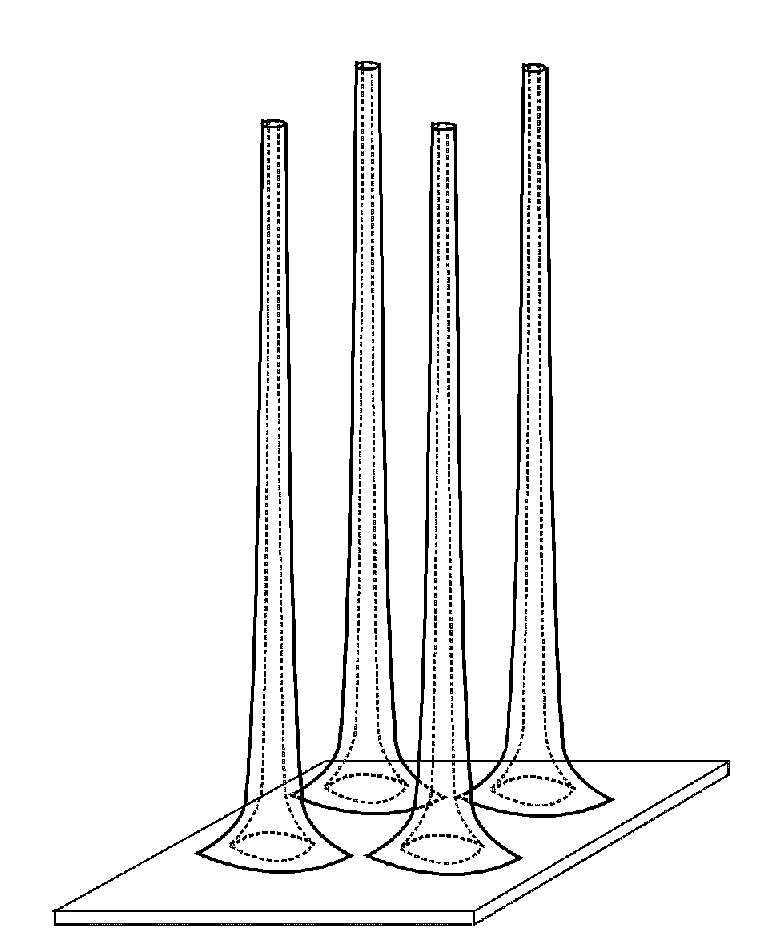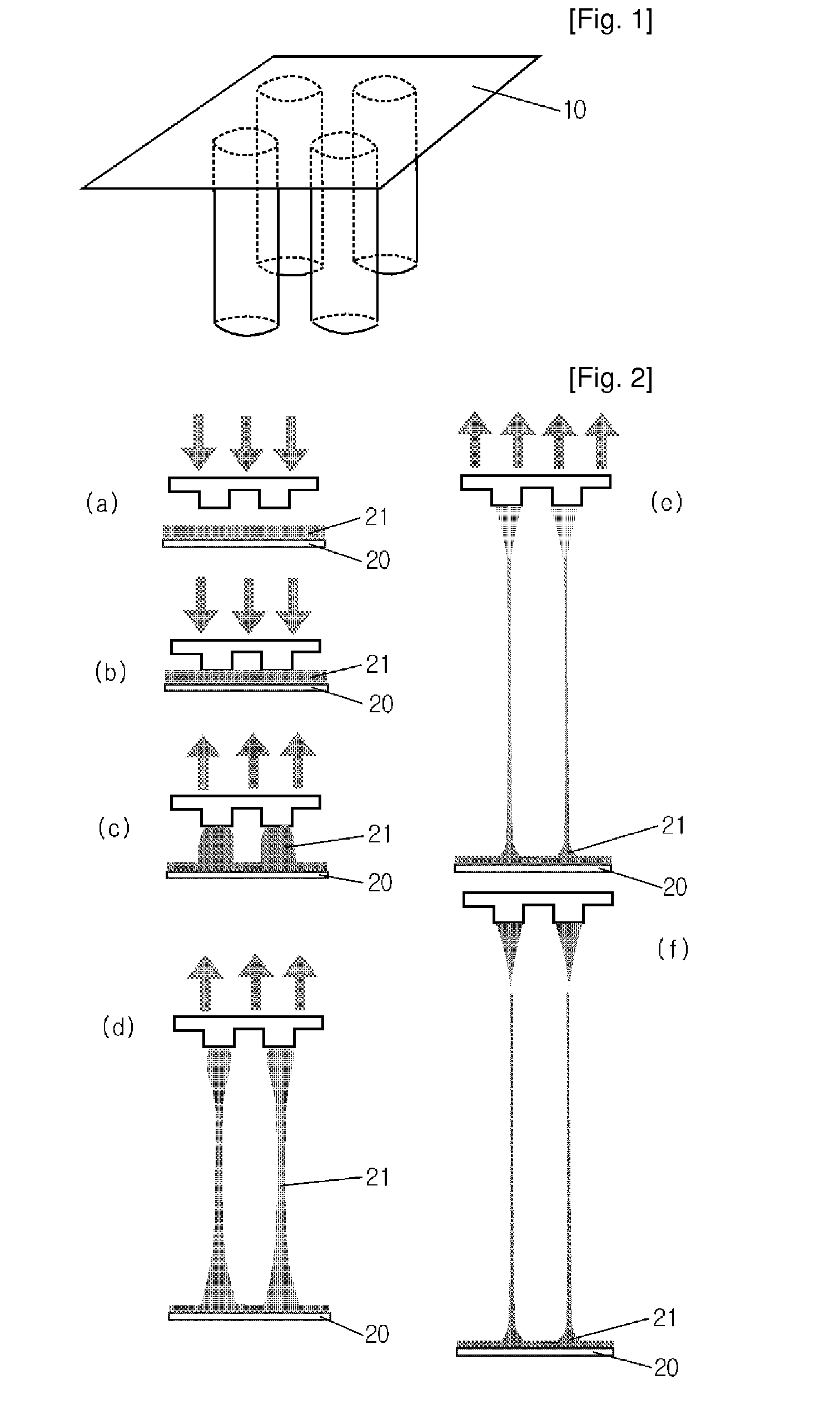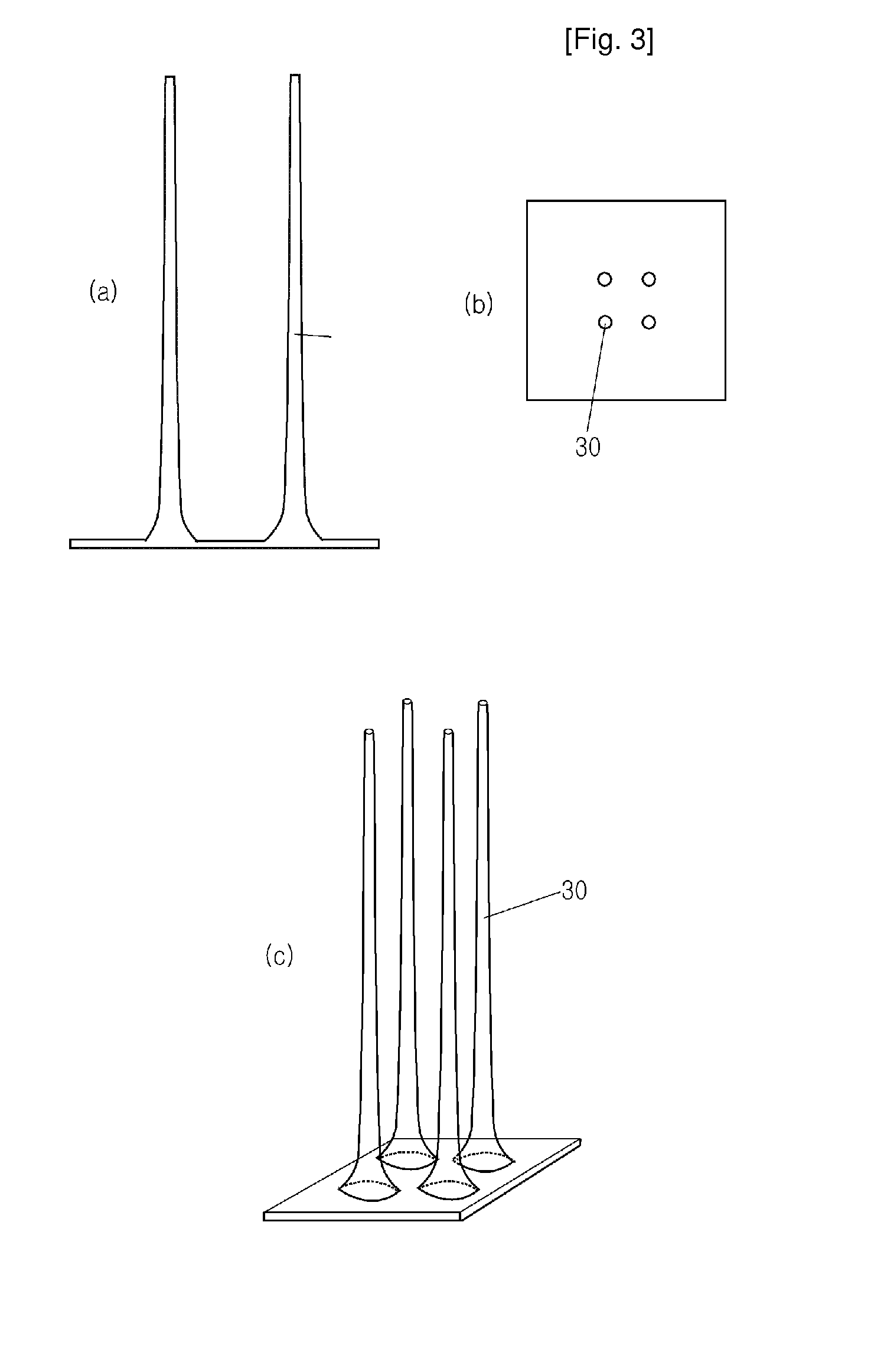Hollow Type Microneedle and Methods for Preparing It
a micro-needle and hollow technology, applied in the field of hollow microneedles, can solve the problems of not being used in the body for analytical material detection and delivery of drugs, affecting the use of various diagnostic techniques and devices, and affecting the use of skin marks, etc., to achieve excellent biocompatibility, increase the drawing speed, and thin and long structure
- Summary
- Abstract
- Description
- Claims
- Application Information
AI Technical Summary
Benefits of technology
Problems solved by technology
Method used
Image
Examples
example 1
Preparation of Solid Type Microneedle
[0031]SU-8 2050 photoresist (commercially purchased from Microchem) having a viscosity of 14,000 cStwas used to fabricate solid microneedles. For this purpose, SU-8 2050 was coated on a flat glass panel to a certain thickness, and it was maintained at 120° C. for 5 minutes to maintain its flowing properties. Then, the coated material was brought into contact with a frame having 2×2 pillar patterns formed thereon, each pillar having a diameter of 200 □ (See FIG. 1). The temperature of the glass panel was slowly lowered to 95-90° C. over about 5 minutes to solidify the coated SU-8 2050 and to increase the adhesion between the frame and the SU-8 2050. Then, while the temperature was slowly lowered from 95-90° C., the coated SU-8 2050 was drawn at the speed of 1 58 / s for 60 minutes using the frame which adhered to the coated SU-8 2050 (See FIG. 2). After 60 minutes of drawing, solid microneedles, each having a length of about 3,600□, were formed. Sub...
example 2
Preparation of Hollow Microneedle
[0032]Three layers of Ti-Cu-Ti (100□-300□-100□) were deposited on the SU-8 solid type microneedle (30) (FIG. 4a) prepared from Example 2 by sputtering (FIG. 4b).
[0033]As another example, an Ag layer was deposited on the SU-8 solid type microneedle (30) (FIG. 4a), when a sliver mirror reaction was used (FIG. 4b). Next, the upper end part of the deposited solid type microneedle was protected with enamel or SU-8 2050 (See, FIGS. 4c to 4f). The enamel or SU-8 2050 treatment to the upper end part is to prevent the upper end part from being metal-plated in the subsequent step. Then, the surface of the solid type microneedle, the upper end part of which was protected, was electroplated with nickel (FIG. 5a). The Ni electroplating was carried out at 0.206 □ / min. per 1 A / d for 60 minutes, resulting in a plated metal thickness of 10□ and an outer diameter of 50□. The plating metal thickness was controlled depending on the plating time. As another example, the ...
PUM
| Property | Measurement | Unit |
|---|---|---|
| Length | aaaaa | aaaaa |
| Diameter | aaaaa | aaaaa |
Abstract
Description
Claims
Application Information
 Login to View More
Login to View More - R&D
- Intellectual Property
- Life Sciences
- Materials
- Tech Scout
- Unparalleled Data Quality
- Higher Quality Content
- 60% Fewer Hallucinations
Browse by: Latest US Patents, China's latest patents, Technical Efficacy Thesaurus, Application Domain, Technology Topic, Popular Technical Reports.
© 2025 PatSnap. All rights reserved.Legal|Privacy policy|Modern Slavery Act Transparency Statement|Sitemap|About US| Contact US: help@patsnap.com



